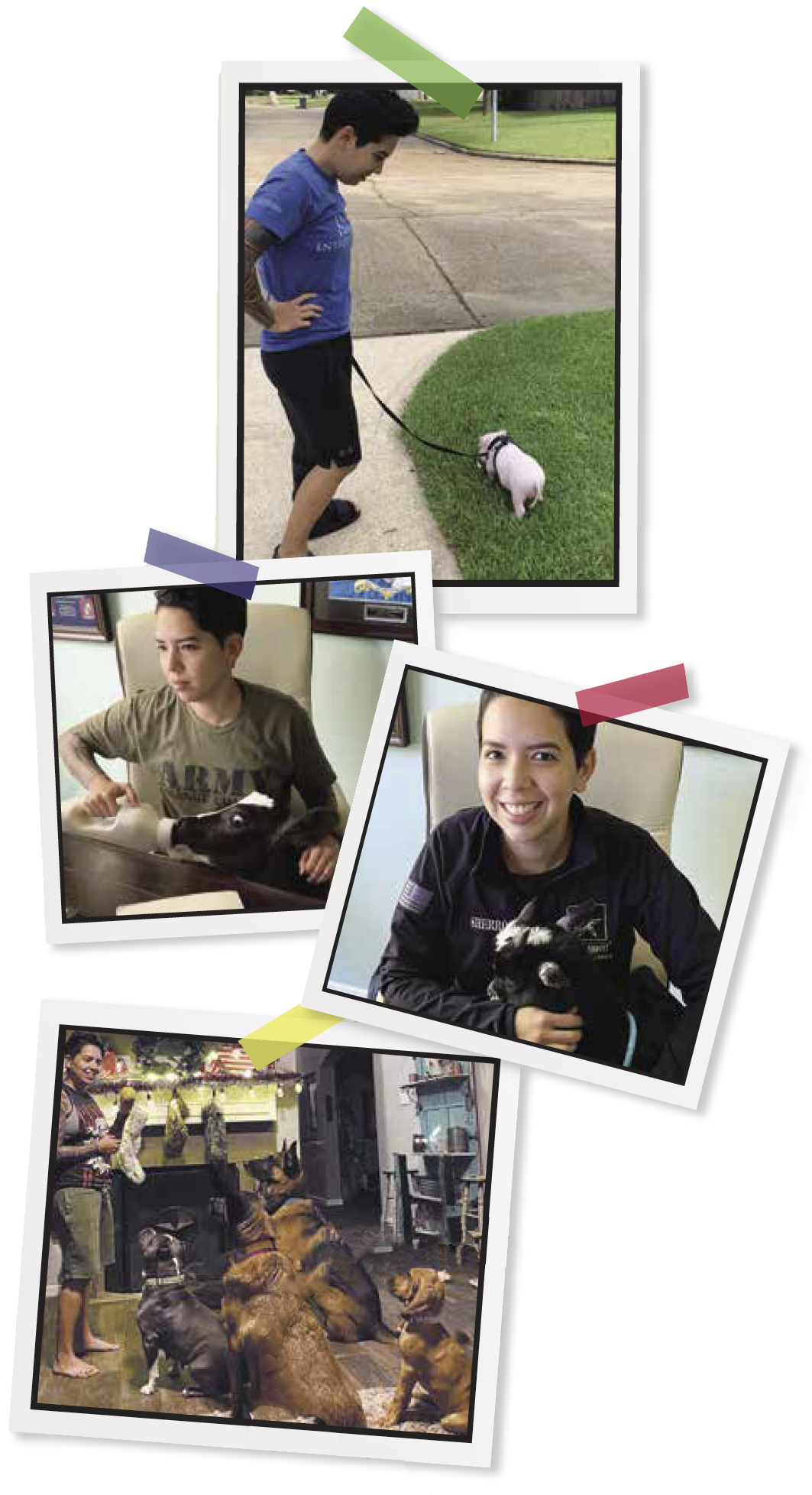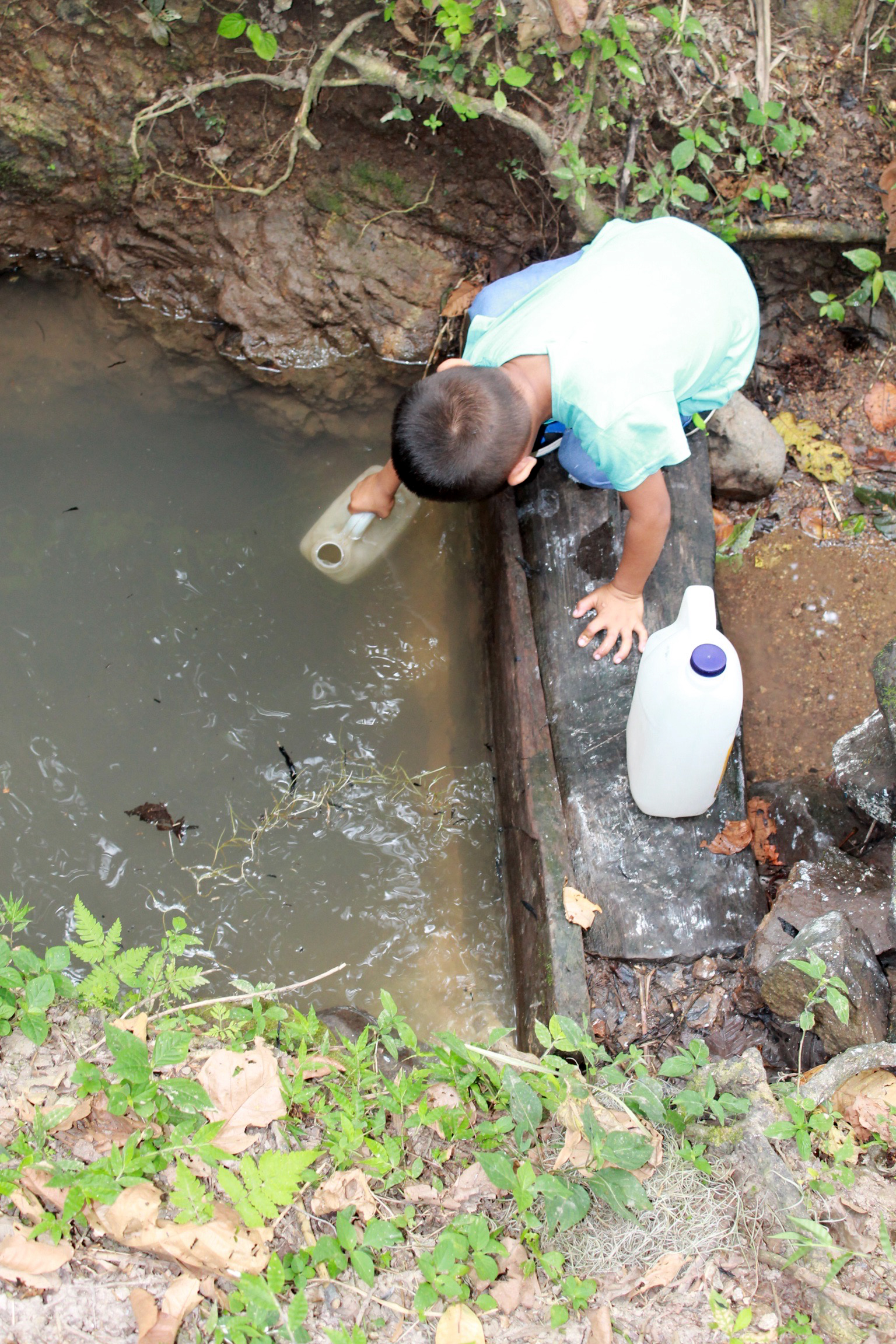
Pandemic Pets
Fostering animals became more than a hobby for Casey Sherrod ’21
One silver lining of working from home during the pandemic is that we’re more available for our pets, and many of us have taken the opportunity to foster an animal in need. By the end of 2020, however, Casey Sherrod ’21 had fostered 138.

“We’ve really capitalized on the work-from-home situation,” says Sherrod, who lives in Crosby, a rural community just northeast of Houston, with her wife and son. They have a four-bedroom house and a spacious yard with plenty of room for foster animals — in addition to their own four dogs and three cats. “It’s been eventful.”
Sherrod’s wife, Amanda, was in the habit of collecting strays even before the pandemic. “My wife just brings home animals all the time. I don’t know what’s going to come through the door,” Sherrod says. But since they both started working from home, they’ve partnered with animal rescues in Houston and elsewhere, including a Massachusetts-based nonprofit called Sandy Paws Rescue.
“A lot of rescues all over the country pull from Houston because of our high euthanasia rate,” she explains. “We have a real problem with overpopulation of stray animals here. But it’s not hard to find homes for dogs in other states. If you go to New England, where a lot of the dogs go, their shelters are pretty empty.”
Most of the dogs who come through Sherrod’s home only stay for a couple of weeks — long enough to get their shots and a clean bill of health — before being transported out of state. The cats tend to be placed locally.
Then there are the more unusual animals Sherrod has fostered: a pygmy goat named Pepper, Mr. Pickles the pig, and Milkshake the calf. Pepper the goat had run away from a nearby home, and Sherrod was able to reunite him with his owner. Mr. Pickles had been adopted as a piglet by someone who lived in an apartment complex and couldn’t keep him when he was fully grown. Potty trained and willing to walk on a leash, Mr. Pickles lived in a pen in Sherrod’s dining room for more than a month until she was able to find him a home on a farm.
Milkshake had been born with a cleft palate and unable to feed normally; his owner, a farmer, gave him up because he didn’t have time to bottle-feed the calf multiple times a day. So Sherrod did, often during her Rice Business classes over Zoom.
“My classmates started saying, ‘I’m just waiting to see what animal will appear on your screen today,’ ” she says.
Her classmates weren’t the only ones eager to see the animals. At the beginning of the pandemic, Sherrod started a TikTok account — @caseyriveter — to document her animal rescue journey. By April 2021, she had 1.7 million followers.
“With TikTok, the point was to spread awareness of why spaying and neutering animals is vital, and why adopting from a shelter is so important and rewarding,” she says. “It’s been awesome to be able to give back. We’ve even talked about starting our own rescue one day.”








